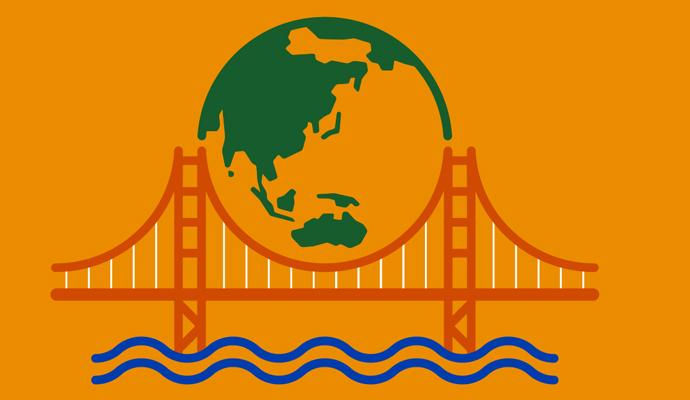Lessons from the East Asian Development Model
What are the paths to economic growth for today’s emerging markets?
How different the world looked only 25 years ago. Reagan’s evil empire, the Soviet Union, had unexpectedly disintegrated, and the Berlin Wall was gone. It seemed only a matter of time before even Communist China would succumb to a Washington Consensus promoting “universal” values, such as liberal democracy and capitalist free-market economics. Indeed, the vast majority of developed countries today are free markets with democratically elected governments. As a result, most Western economists and policymakers, including those at the World Bank and International Monetary Fund, agree that democracy and free markets are prerequisites for economic growth and development.
But a drastically different sentiment is gaining ground in the emerging markets of Southeast Asia, the Middle East, and Africa. Throughout these regions, many started to question the West’s free market orthodoxy after the 2008 financial crisis. Even democracy itself has come under fire, as its modern-day paragon, the U.S., suffers from intolerable political gridlock, and India, arguably its standard-bearer in the developing world, has seen its economic development fall far behind China’s. Meanwhile, recent democratic experiments in countries such as Iraq and Egypt have failed to thrive. In fact, Freedom House’s latest annual report suggests that democracy peaked around 2005 and has been in decline ever since.
Instead, an alternative Beijing Consensus is increasingly held up by leaders of many emerging markets as the benchmark for economic development. Although there seems to be surprisingly little consensus (even in China itself) about what the Beijing Consensus actually is, most observers consider some combination of state capitalism and a decidedly non-democratic political system as its most salient features. Regardless, China’s unprecedented economic success over the last 30 years is undeniable, and the appeal of its autocratic political system to emerging countries’ elites, including dictators of various degrees of venality, is abundantly clear.
It’s not just China. The East Asian experience more broadly, as illustrated by Japan, South Korea, and Taiwan, actually describes an economic development model with distinct policy objectives and institutional requirements at each stage. In fact, contrary to the prescriptions of free market economists, the East Asian model suggests that, especially in the early days of development, governments must sometimes judiciously intervene rather than simply liberalize their economies right away.
The appeal of China’s autocratic political system to emerging countries’ elites is abundantly clear.
For example, the primary challenge for a typical low-income agrarian economy is how to break free from structural poverty. Using the East Asian model as one potential development strategy, the first step is to implement household-based land redistribution programs and other productivity improvement initiatives, such as increasing irrigation and the use of fertilizer. The resulting rural surplus can then be used to subsidize a move into more productive manufacturing activities of simple, cheap, and labor-intensive goods for export markets by facilitating urbanization as well as providing the enabling infrastructure and access to finance.
When the supply of surplus farm labor eventually runs out and costs rise (the infamous Lewis Turning Point), the role of the government must change to help domestic firms move up the value chain by facilitating the transfer of technology and know-how from developed markets. It is crucial at this stage to protect nascent domestic companies from better-resourced multinationals, especially in asset-, scale-, or knowledge-intensive industries, while simultaneously encouraging domestic competition, promoting exports, and weeding out the losers (as opposed to picking the winners). Similarly, it is risky to open up and deregulate the financial sector too early, as doing so will tend to funnel capital into more volatile short-term investments and increase the likelihood of a banking crisis and exposure to capital flight. In fact, it is only during the latter stages of the transition from middle- to high-income status that governments should finally start to pull back and change their role from active intervention in the economy to passive enablement of individual firms to encourage new sources of competitiveness, such as breakthrough product innovation.
It is easy to see why democracies aren’t necessarily advantaged during much of this long development trajectory, given the scope and complexity of the intervention required, the extractive nature of many policies, as well as the related need to overcome powerful vested interests (for example, from land owners at the early stages and the nouveau riche and middle class later on). Democracies are notoriously messy and indecisive, even in developed countries, and are too easily hijacked by short-term populism. This is particularly acute in emerging countries, where the population tends to be less educated and therefore more vulnerable to manipulation.
It is here where the comparison between democratic India and autocratic China is so instructive. The decision of leaders such as Deng Xiaoping to ignore well-intended policy advice from, for example, the IMF, seems to have served China well. In fact, Deng’s greatest contribution may very well have been his conviction that political liberalization can take place only after sufficient economic progress has already been made. In contrast, India has suffered from a fractious political system that has made it much more difficult to invest in long-term economic development. As a result, the government has failed to deliver even basic necessities, such as paved roads, reliable electricity, and clean drinking water, to many of its people. (India’s newly elected government, led by Prime Minister Narendra Modi, faces a daunting challenge—but comes to power with an overwhelming mandate that leaves room for optimism.)
Over time, however, economic development may lead to better informed citizens demanding more political inclusiveness in return. This is precisely what happened in South Korea, which is now ruled by a democratically elected government. And China certainly recognizes this. In fact, the country’s leaders haven’t exactly been celebrating their newfound adulation in the developing world. Instead, they are feverishly trying to reform the country’s vaunted economic model and become more democratic, albeit only selectively at the local level and only within the Communist Party itself. Will China’s leaders’ vision of an intraparty democratization process suffice? At the time of this writing, it appears that as long as China can continue to improve average living standards, the urban middle class—the only cohort that could conceivably force regime change—would probably accept only slight modifications to the status quo. Hence China’s 7.5 percent annual GDP growth target remains untouchable, and the new leadership is taking recent revelations of systemic corruption and pollution very seriously.
Going forward, democracy will probably continue to face considerable pressure, as more emerging economies choose some form of the East Asian development model, while developed countries, hopefully including the U.S., try to address the shortcomings of their own governments. However, as economic convergence proceeds over time, democracy will likely regain its footing as the form of government best suited to deliver long-term growth in developed high-income economies. Either way, the key will be to abandon the prevailing orthodoxy that institutional change must invariably precede economic development, and focus instead on tailoring the degree, speed, and sequence of political and economic liberalization to the unique growth requirements of each emerging market.




